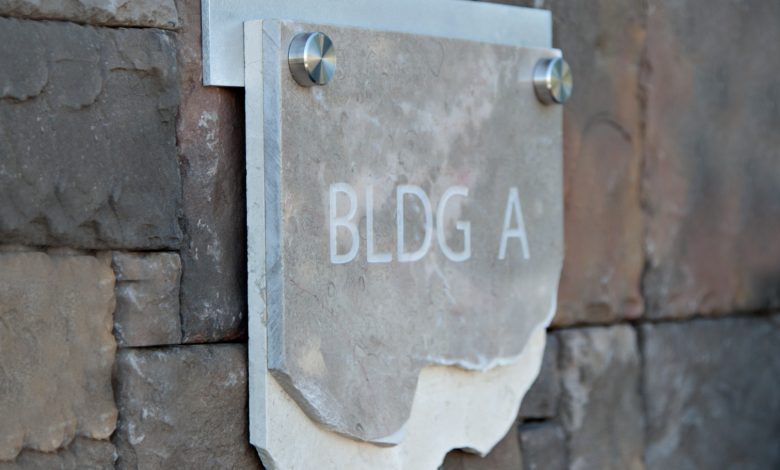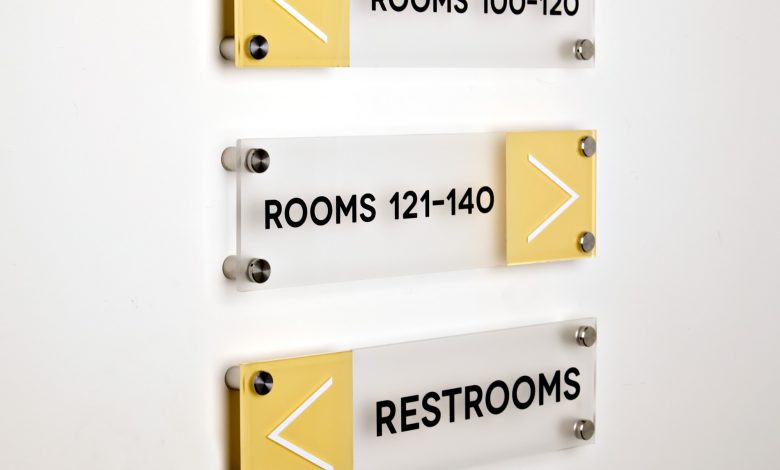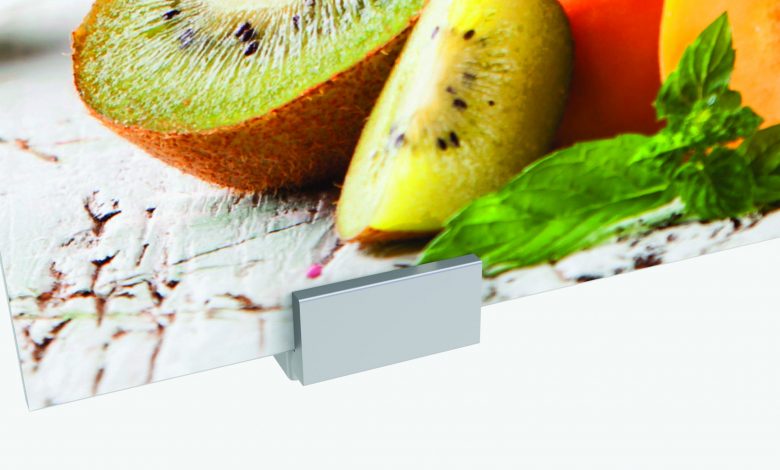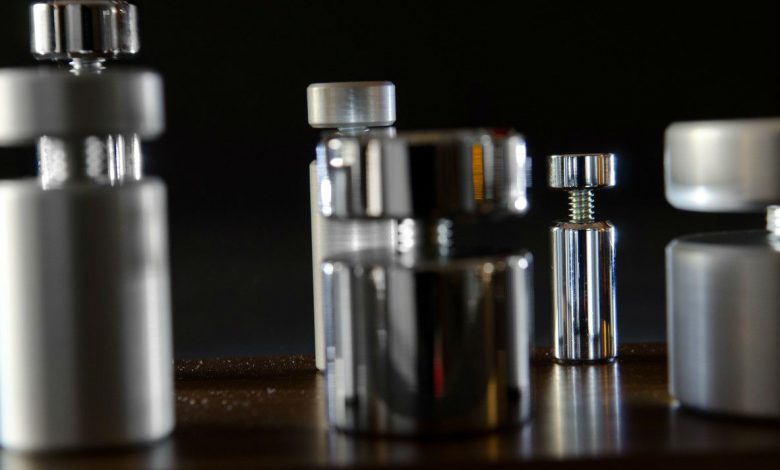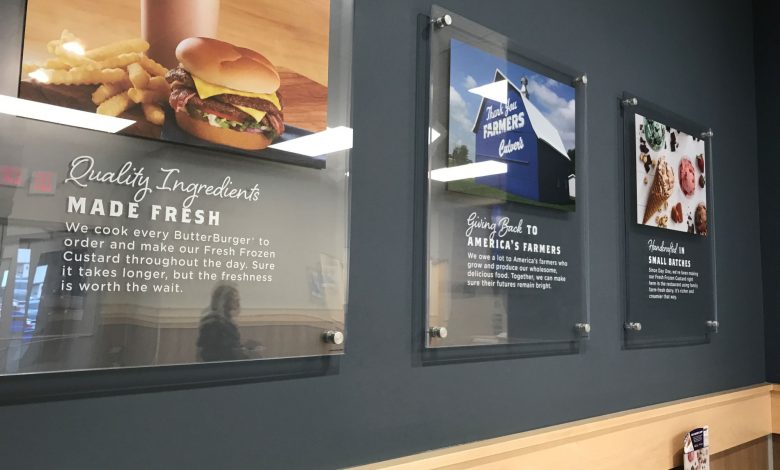An Overview of Standoff Systems
Standoff systems have practical, aesthetic applications wherever there is foot traffic
For a small piece of equipment, the standoff has come a long way. Standoff systems originally were used to protect museum displays, but now they appear in multiple places, from fast food chains to corporate offices. They’ve expanded from a utilitarian application to hold up signs and protect objects on display to decorative, eye-catching augmentation and design.
“It definitely looks a lot nicer than driving screws in corners. It definitely gives the product a much richer look,” says Robert Borden, tech lead for the sales team at Gyford Standoff Systems, a standoff solutions company based in Reno, Nevada, now owned by Findlay, Ohio-based engraving substrate manufacturer Rowmark. “It takes it more toward an art installation look than just being signage. It makes it look like a higher-quality product installed on the wall.”
Standoff systems hold signs away from the wall or another mounting surface, creating a drop shadow and making the signs stand out more and appear more substantial while giving them aesthetic value, Borden says. “It creates a visual interest instead of being flat against the wall.”
Uses and places
Standoff systems are used anywhere there is a need to display text, graphics, or a combination of both, says David Pountney, managing director of Pizazz Display Systems, a mounting hardware manufacturer in Auckland, New Zealand.
“The range of applications is incredible,” Pountney explains. “There is an array of uses and applications and individuality. The creativity is mindblowing.”
Standoffs appear at sites of public foot traffic where signs are needed for information, directions, or decoration. They have many applications from a basic sign or directory to exhibiting artwork, photography, and museum artifacts; enhancing donor walls and plaques; protecting art, fossils, or museum pieces under glass, plastic, or acrylic; and becoming part of shelving systems and displays. They primarily are used in commercial applications, appearing in galleries, museums, restaurants, retail outlets, shopping centers, airports, hospitals, universities, hotels, movie theaters, lobbies, and offices.
“Within the past 10 years, the usage of standoffs has taken a dramatic turn from utilitarian usage to a more decorative usage,” explains Paul Bernstein, vice president of Metomic Corporation, a manufacturer of standoff systems in Chicago. “You can find them being used on directory signs, point-of-purchase signs, donor walls, and wayfinding signage. Both inside and outside, their usage has increased several-fold.”
Another use is in marketing and promotions because of the appeal of their appearance, says Tom Merminod, chief operating officer of MBS Standoffs in Tampa, Florida, which specializes in aluminum and stainless steel standoffs.
“In short, it just makes your sign more appealing to the eye, allowing for the essential components of marketing a business, recognizing a company’s brand, guiding us, and drawing attention to promotions,” Merminod says. “There truly are no drawbacks to standoffs; all they do is add value to the sign.”
One such value is seen in their lifespan, having no expiration date with proper care and mounting, and the fact they have longevity, Merminod says.
“When speaking about the industry, we believe standoffs will always be around. There will always be a need for signs to be mounted, and we believe standoffs are the simplest and most appealing way to do so as of today,” Merminod says.
Hardware
Standoffs consist of two pieces of hardware to mount the panels displaying graphics and text. The barrel and capped front screws give the panels a three-dimensional look by spacing them away from the wall or other mounting surfaces. The barrel, typically cylindrical in shape, serves as a spacer behind the panels by pushing them out and creating distance from the wall. The front screws, which screw into the threads of the barrel, can be seen as a decorative element on the exterior of the panels.
The panels are secured between the barrel and front screws, and holes need to be drilled in the panels to allow the front screws to go through, Merminod says.
Standoffs are mounted essentially in the same manner as not using them, except adding the barrel and cap instead of just screws, “allowing the sign to truly have more appeal to the eye, while still retaining a very simple install application,” Merminod says. “It is now used as a way to make projects look modern and unique on top of having the sign mounting functionality.”
The barrels can be of different lengths for different aesthetic appearances, Borden says, adding that it is the cap placed on the front screws that provides “the most aesthetic impact.”
Barrels come in various shapes, but as with many companies, cylindrical is the staple for Gyford Standoff Systems, Borden says. Other shapes include squares, hexagons, and anything else, like pyramid customs, plus the edge grip, which does not require penetration through the material but holds the sign material by the edge, he says.
Standoffs of all shapes and lengths are easy to install and change out while keeping the sign flat and protected without affecting the material or print, Borden says. The back panel, which can be acrylic or glass, remains on the wall with the front panel the only part that is removed, he says.
“You can remove the graphic or signage panel by taking the cap off the face, taking out the panel and screwing it back on in less than one minute,” Borden says. “You can swap it out quickly.”
Pizazz Display Systems offers two-part monomount standoffs for displaying single panels and three-part, multi-mount standoffs for displaying graphics and texts between separately secured front and back panels, Pountney says.
“When you want to display graphics that need to be changed from time to time, multi-mounts are very user-friendly and make changing graphics easy, fast and safe,” Pountney says.
Pizazz offers extra spacers for its monomounts and multi-mounts to increase the standoff distance and provide multi-layering or offsetting options, which “can give more visual impact and a much stronger visual experience,” Pountney says. Pizazz also offers edgemounts that enable graphics to be displayed with separately secured back panels to create a border around the graphics and increase their visual impact, he says.
Material options
In addition to the available shapes and lengths, the materials for standoffs vary slightly for indoor and outdoor applications, but aluminum is a popular material for both. For indoor uses in particular, the vast majority of standoffs consist of aluminum components.
Both the material and machining of aluminum is a less expensive option, so companies like Gyford Standoff Systems make the majority of their products out of aluminum to keep them more economical, Borden says. For the outdoors, standoffs are made out of more resilient materials, such as high-grade stainless steel that prevents erosion, he says.
“They’ll outlast most of the signage material,” Borden says.
MBS Standoffs mainly uses stainless steel and aluminum for the standoffs it produces, as well as glass and Plexiglas, which also are popular and, like the other two materials, give a modern look. “When you combine glass and standoffs, you get a very modern look out of your sign, ” Merminod says.
Standoffs can be of any material that can be drilled. Merminod recommends the drilling be done along the edges or at the corners.
“That is the beauty and versatility of standoffs, the fact that no matter your material, if you are able to drill through, you will be able to use standoffs for your project,” Merminod explains. “There really are not materials to be avoided.”
However, a few plastics are not suitable for outdoor uses and are to be avoided in those cases.
“Whenever you are mounting something for exterior use, you must quantify that your product is manufactured or finished in something that will withstand the elements,” Bernstein says. “Some of the plastic products on the market may not hold up in the weather, whereas the stainless or anodized parts should work fine.”
Another material to avoid for both indoor and outdoor usage is uncoated brass, according to Borden , due to the cost and maintenance required, though Gyford Standoff Systems will use the material in custom products.
“It has to be polished regularly and tarnishes very easily, and they’re not as durable. I don’t think aesthetically they look great,” Borden says.
Pizazz Display Systems is phasing out selling electroplated brass, focusing on electroplated and anodized aluminum, according to Pountney.
“We know aluminum can do everything brass can do,” Pountney says, adding that aluminum is more cost-effective and offers a wider range of color options than other materials.
The Finishes
Gyford Standoff Systems offers thousands of different finishes for standoffs in its line of stock products, as well as the customs the company produces. The finishes include color anodizing, an electric chemical process that makes aluminum resistant to rust and adds color to the material; powder coating to add color with paint; and platting with nickel or chrome plated parts, a process to electroplating a thin layer of nickel or chrome onto metal.
Powder coating works well for both interior and exterior uses, while color anodizing is susceptible to ultraviolet light and is better for interior use only, Borden says.
Metomic Corporation offers standoffs in two finishes, anodized brushed aluminum and polished chrome, adding to the look of the sign, Bernstein says.
“Standoffs provide a dimensional effect and greatly enhance the ordinary vanilla acrylic sign. They breathe new life into everyday signage,” Bernstein says. “They allow the sign maker to enhance the product for his customers and increase his or her sale at the same time. Mounting hardware used effectively can become its own profit center for a business owner.”
